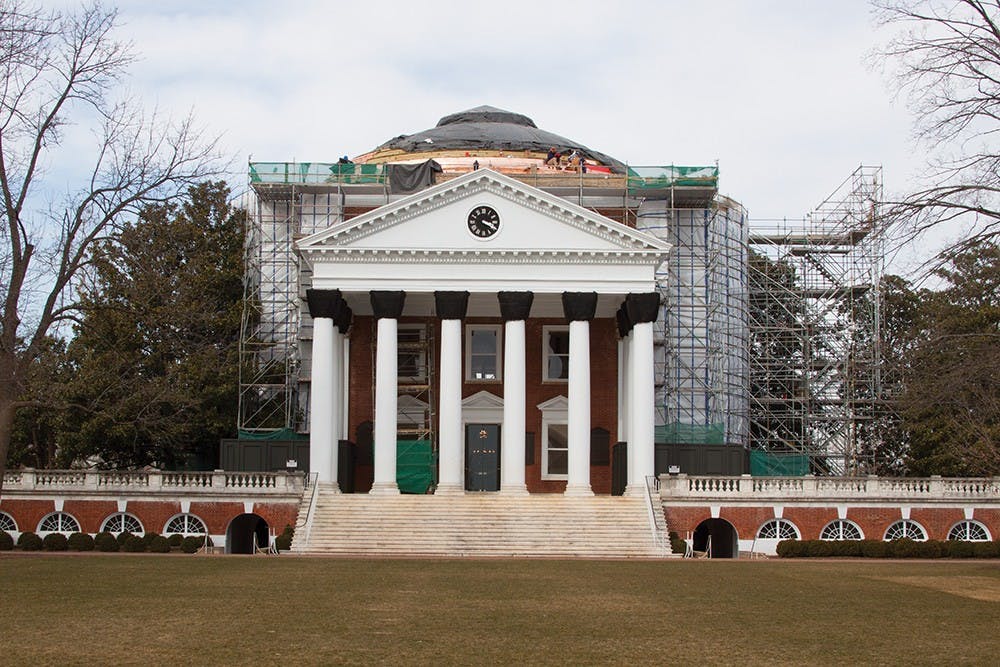The University sent out its first batch of admissions offers to the Class of 2018 last Friday.
The University received 14,819 early action applications — 4,027 from in-state students and 10,792 from out-of-state students.
Although data for the year has not been completely compiled, available admissions statistics reveal some interesting trends — most notably, this year’s applicant pool showed an increase in the number of underrepresented minority applications.
Of the nearly 15,000 early applications, 4,590 applicants were accepted and 3,771 were deferred. In-state students were admitted at a rate of 51.1 percent, while out-of-state students were admitted at a rate of 23.5 percent.
Not all admission offers will be accepted by the students and the University ultimately expects to enroll approximately 3,570 students after the second round of offers are made in the spring.
The University pays close attention to the yield rate of admission offers — the ratio of the number of students that enroll to the number of offers given. During the past 10 years, the University’s yield rate has dropped 13 percent overall. In-state yield has dropped 5.8 percent since 2003, with a peak of 68.4 percent in 2005. Out-of-state yield has steadily fallen 12.9 percent in the same period.
The total number of completed out-of-state applications increased by nearly 5,000 between 2011 and 2013 — increasing by almost 2,000 between 2012 and 2013 alone. Completed in-state applications barely increased by 1,000 during the same three-year period.
“If applications continue to increase we can make more offers, but the offer rate could stay the same or even decrease,” Dean of Admissions Gregory Roberts said. “The trend is the result of increased competition for students and a dramatic increase in applications, which has resulted in a smaller percentage of offers.”
At this point, it is difficult to say whether or not admissions rates will increase in the next few years to compensate for the decreased yield, according to Roberts.
Applications by underrepresented minorities increased at a greater rate than general applications — likely the result of focused efforts over the past few years to attract these students.
The University saw a 15 percent increase in applications from first-generation students this year, as well as a 22 percent increase in applications from African-American students, Roberts said.
University President Teresa Sullivan reached out this year to Virginia schools in which over 50 percent of students receive free or reduced lunches, inviting principals to recommend their best-performing students to visit the University.
The University also sends representatives directly to lower-income areas as a means of recruitment.
“We visit hundreds of schools and travel with Harvard, Princeton and Yale to low-income areas of the country to recruit underrepresented students of all types,” Roberts said.
Despite efforts to increase the University’s diversity, there is no expectation for a number or percentage of first-generation and minority students who will finally enroll in the Class of 2018.
“We don’t have any quotas or targets,” Roberts said. “We’re looking to enroll a diverse class, so we’re making decisions on individual applicants. We expect that class to be extremely diverse, but it will also be talented academically.”
The University will have a more complete analysis of admission statistics after May 1.
“The Admission Office plans to survey admitted students again this summer to learn more about their decisions to enroll and choose another school,” Roberts said.
The University boasts a holistic review process, in which all aspects of a student’s application are considered, and no student is overlooked based on empirical data such as GPA and SAT scores.
“There’s not a formula or a threshold for GPA or SAT scores,” Roberts said. “We’re looking at all the material a student submits. We don’t have a minimum cutoff for SAT scores because SAT scores are just one part of the puzzle.”







